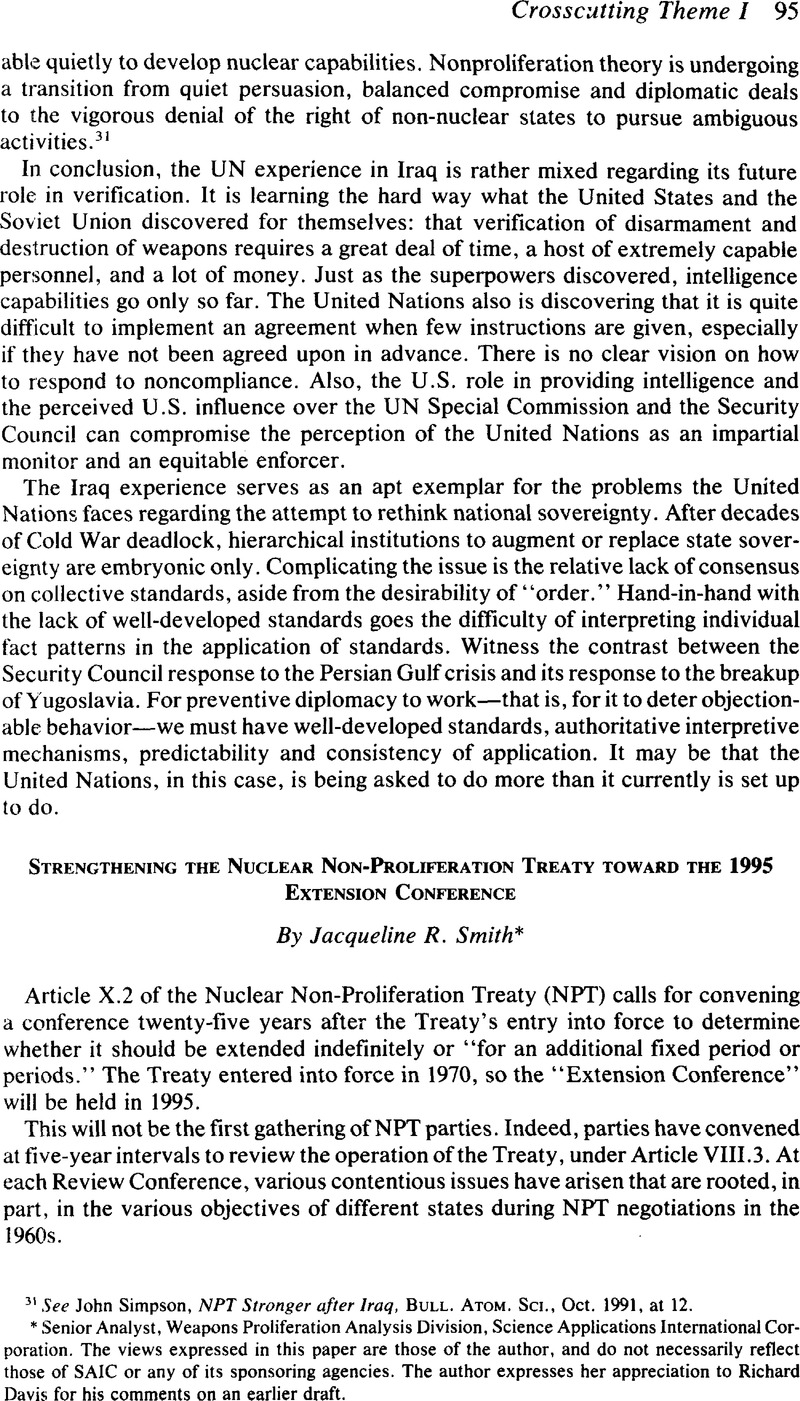No CrossRef data available.
Published online by Cambridge University Press: 28 February 2017

1 For a thorough discussion of consolidation, see Spector, Leonard S. & Foran, Virginia, Preventing Weapons Proliferation: Should the Regimes be Combined? (1992)Google Scholar.
2 This paragraph reads:
Each State Party to the Treaty undertakes not to provide: (a) source or special fissionable material, or (b) equipment or material especially designed or prepared for the processing, use or production of special fissionable material, to any non-nuclear-weapon State for peaceful purposes, unless the source or special fissionable material shall be subject to the safeguards required by the article.
3 The multilateral agreement to control exports of dual-use items within the NSG context would have faced numerous, perhaps insurmountable hurdles if negotiated in an NPT forum, owing to the potential objections of NNWS Treaty parties.
4 France—an important nuclear supplier—participated in the NSG, at the time of its creation, but was not an NPT Party and thus did not participate in the Zangger Committee.
5 Certainly, it can be argued that Zangger obligations would also exist in the event that the NPT lapses, since participating states volunteered to adopt national constraints on trade behavior in interpreting NPT obligations but were not obliged to do so as a result of stipulations in the Treaty itself. Nevertheless, absent the NPT framework, states arguably could reverse national decisions instituting Zangger trigger lists to control exports without fear of international recrimination. The question is moot, since Zangger items are covered by NSG trigger lists. The point remains, however, that parallel improvements to the nuclear nonproliferation regime would maintain their legal integrity in spite of any future lapse of the NPT.
6 Article II states:
Each non-nuclear-weapon State Party to the Treaty undertakes not to receive the transfer from any transferor whatsoever of nuclear weapons or other nuclear explosive devices or of control over such weapons or explosive devices directly, or indirectly; not to manufacture or otherwise acquire nuclear weapons or other nuclear explosive devices; and not to seek or receive any assistance in the manufacture of nuclear weapons or other nuclear explosive devices.
7 Article III.2 text, supra note 2.
9 See IAEA, Non-Compliance of Iraq With IAEA Safeguards Agreement, Press Release 91 24, July 18, 1991.
10 See Shaker, Mohamed I., The Nuclear Non-Proliferation Treaty: Origin and Implementation, 1959–1979 (Vol. 1) (1980)Google Scholar, chapters 3 and 4.
11 Summit at the U.N., N.Y. TIMES, February 1, 1992, at A4.
12 Id.
13 Statute of the International Atomic Energy Agency, Article XII. C, 276 UNTS 3 (1957).
14 Supra note 11.
15 See Charter of the United Nations, chapter 7.